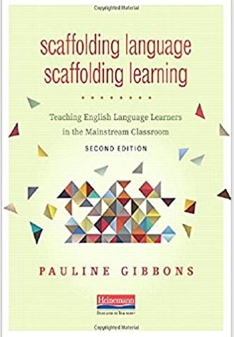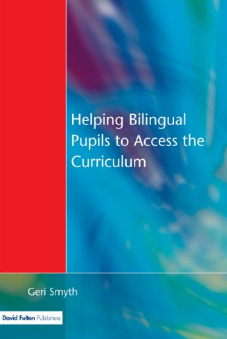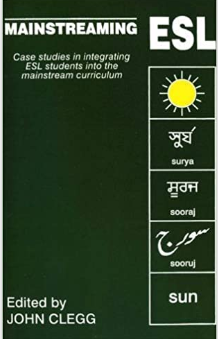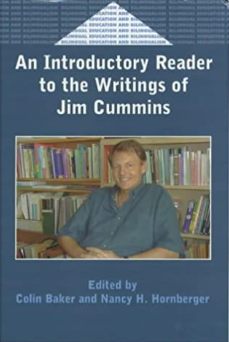Like many of us, I am home isolated with my family. While keeping safe, well and intensely appreciative of our key workers is top priority, this is also an opportunity to review my library of resources and refresh my knowledge. I have gathered together basic and advanced reads to help you come out of this a better professional. You will find the Amazon links on this page.
Disclaimer: I am an Amazon Associate so I may get a few pennies if you decide to get one of these books through the links included here. Rest assured that these books represent the best I’ve read and fundamentally changed, informed or helped my practice as an EAL /Languages professional. I believe the authors should be promoted for their outstanding and seminal works.
Enjoy!

Come out of this a better professional! Read!
Quick Reads – Top 3
- Chris Pim has authored a plethora of useful, easy reads on supporting EAL pupils. How to Support children learning ENGLISH as an ADDITIONAL LANGUAGE was one of the first books I ever read on EAL. It is is still a useful encapsulation of the most basic principles and provides a wonderful starting point for all staff. It is only available as a soft-cover book. Well worth a read!
2. 100 Ideas for Supporting Learners with EAL is a well-organised array of strategies for teaching, assessing and acclimating EAL learners in the mainstream curriculum. Chris Pim’s 11 sections go from Induction and Transition to Assessment through Curriculum Access and working on the different skills of speaking, reading and writing, finishing with ways to reach out to parents to a Whole School Approach. Each of the 100 Ideas is 1-2 pages long and very readable with websites and resource suggestions. A great refresher on some key, but inspired basics and well worth picking up!
3. The Pocketbook Series for Teachers covers a wide array of pedagogical topics. Alice Washbourne’s EAL Pocketbook was a welcome addition when it was first published in 2011. Best for picking up quick, initial tips and signposting overall issues to think about.
Medium Reads – Top 4
4. Pauline Gibbons’ Scaffolding Language, Scaffolding Learning is my top choice for revisiting how to structure multi-modal learning for any curriculum topic from talking to writing or reading for EAL learners. Seamlessly weaving in academic concepts which touch upon how language and cognition function, she makes the theoretical big-hitters like Vygotsky, Cummins, Halliday and Swain applicable to classroom practice. Her 4-stage curriculum cycle is a must revisit process for any teacher interested in scaffolding. And let’s face it, what teacher isn’t? At 152 pages, it’s completely accessible. Here I show the second edition cover published in 2014. .
5. Second Language Acquisition by Rod Ellis is a small, 144-page Oxford Uni Press book which is a condensed, although accessible, summary of the body of research on describing and explaining second language acquisition. It deals with linguisitics, the socio-linguisitic concept of discourse and psycholingusitic aspects of interlanguage among others. Sounds complicated, but is brief and clear with separate sections on Readings, References and a Glossary.
6. Helping Bilingual Pupils to Access the Curriculum by Geri Smyth is another gem which builds on the work by Pauline Gibbons. The book is almost entirely practical, built on case studies of pupils. Smyth’s structure of ‘issues, educational challenges and possible solutions’ on each child makes it very easy to follow her rationale. The cases helpfully range from refugee to previously educated children. Like Pauline Gibbons, the research is mostly primary school based and assessment references the older National Curriculum levels. But the solution-construction to each ‘problem’ is still enlightening and deserves a revisit.
7. Mainstreaming ESL by John Clegg is a bit more ambitious for re-read at 239 packed pages but still well worth the trouble. This book has contributions from Canadian, UK, US and Australian researchers which helpfully give different perspectives on how EAL pupils are catered for within different educational systems. What I really like about Clegg’s book is the concrete examples of work sheets or resources and the student work produced with those. The breadth of topics across Environmental Science, Geography and History also make a change from the usual English-literature based research.
Advanced Reads – Download 2 of them here!
So, this is when you have read everything else, have more time on your hands and are willing to get bigger books with lots more original, academic research. Get ready to be challenged!
8. Bridging Discourses in the ESL Classroom by Pauline Gibbons is phenomenally well-researched. This was the larger, academic precursor to Scaffolding Language, Scaffolding Learning, mentioned previously. Gibbons starts with a socio-cultural view of language to help her build in inclusive pedagogy for minority learners and then describes the research she did to support her study. Finally, she goes into the discourse of classrooms (classroom talk and other communicative norms in that environment)and then looks at it from teacher and second-language learner perspectives.
9. Writing in English as an Additional Language at Key Stage 2 by Professor Lynne Cameron and Dr Sharon Besser is one of my favorite pieces of direct research. Originally available from the DfES as Research Report 586, it can now be downloaded for free from NALDIC and I include it here
Cameron and Besser did a statistical study of the types of errors made in writing by EAL pupils and boiled it down into a ‘look here first’ list of the most common errors. In trying to mark and correct the writing of EAL pupils, I have found it immensely helpful. So, for example, key findings include EAL problems with formulaic phrases, prepositions, sentence grammar with advanced subordinators, adverbials and advanced or compound verbs, to name a few. These categories of language problems have allowed me to narrow and explain the types of errors I marked and corrected. This was more helpful than correcting everything! It also enabled me to give my non-EAL colleagues a prioritised list of errors to correct in their curriculum subject writing and to judge progress.
10. Cameron and Besser have also done a report on Writing in EAL at Key Stage 4 and Post-16. They compare their findings with that in the KS2 report. You can down load that here. Together these research reports have vastly improved my ability to target and prioritize error classification and correction. Both are hugely important for: breaking down and explaining different types of writing errors, showing progress within levels or grades and showing mainstream colleagues how to do the same while not overwhelming yourself, your students or your colleagues.
11. An Introductory Reader to the Writings of Jim Cummins.The Big Daddy of EAL. He had to feature here. I had read scores of authors who referenced his original, groundbreaking research and used the terms that he created that I decided to read him directly. I am glad I did. Jim Cummins did for linguistics what Einstein did for physics. He theorised a model of language acquisition and cognition which overturned the accepted wisdom of the time: that brains could not handle more than one language, that bilingual pupils were disadvantaged by language ‘confusion’. In doing so, he helped create the foundations of the bilingual education system and raised the academic status of biligualism itself.
This books covers all the terms you may have seen elsewhere: the CUP (Common Underlying Proficiency) Model of bilingualism; BICS (Basic Interperonal Communicative Skills) and CALP (Cognitive/Academic Language Proficiency), the Threshold Hypothesis and many more. He was the first to critique the use of psychometric (cognitive ability) testing on minority pupils for the purpose of labelling them SEN and helped provide evidence to the legal challenges that eventually released bilingual students from SEN classes into bilingual classes where they could excel.
11. A Bonus! The Foundations of Bilingual Education and Bilingualismby Colin Baker is a textbook that pulls EVERYTHING together in a 19-chapter book from definitions of bilingualism to assessing special needs to minority empowerment in majority education systems.
That’s it. Stay home, stay safe, protect the NHS and, definitely read!

















